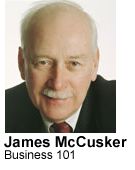 |
Published November 2002
Military, like business, changes with demand
EDITOR’S NOTE: This is the first of a series. The second will describe how an organization’s structure, military or business, drives its effectiveness.
 At
first, the U.S. action against the Taliban in Afghanistan didn’t present
any real surprises to Americans watching the news on television. There
were the usual “stand ups” by TV reporters, mixed in with the computer-game-like
videos of missiles taking out al-Qaida camps and buildings.
At
first, the U.S. action against the Taliban in Afghanistan didn’t present
any real surprises to Americans watching the news on television. There
were the usual “stand ups” by TV reporters, mixed in with the computer-game-like
videos of missiles taking out al-Qaida camps and buildings.
Then, unexpected images began to show up on our TV screens. First, there was a photograph of what appeared to be armed nomadic tribesmen on horseback, making their way across a startlingly beautiful, if desolate, landscape. When that picture was first released, Defense Secretary Donald Rumsfeld identified one of the riders, virtually indistinguishable from the others, as one of our guys, a member of a Special Operations unit deployed to the area around Mazar-e Sharif to assist Northern Alliance commander Abdul Rashid Dostum.
Later, of course, we got to see our Special Ops people, again on horseback, competing in buzkashi, a wild, Afghanistan version of a polo match, which was put on after the Taliban had been routed, to allow Dostum’s soldiers to let off some steam.
In that event, the Special Ops guys, untrained as horsemen, demonstrated that they could ride as “flat out” and fearlessly as the Afghanis themselves — and could compete successfully in any environment. Dostum and other leaders quickly came to the conclusion that if these were the kind of people the United States was sending, there was no doubt about the outcome of the war.
The ability of the U.S. Special Ops teams to “fit in” and form the tight relationships needed to pursue the war was exemplified by an incident involving a misdirected air strike that hit friendly forces. When the bombs started falling, one of the Special Ops team threw himself on top of Hamid Karzai to protect him. Maybe he saved his life, maybe he didn’t — but it is not something that is quickly forgotten. A bond was formed between the Afghan forces and the Special Operations people sent to help them.
Later, visible evidence of this bond came during an assassination attempt against Karzai, who had by then become president of Afghanistan. Not surprisingly, Karzai had picked Special Operations people for his security team, and when the assassination attempt was thwarted, the Special Ops team added even more credibility to their abilities.
The failed assassination attempt, though, also brought more visibility back in the United States — in the form of television footage of a shirtless Special Ops member responding to the attack. This, and the prevalence of beards on Special Ops team members, demonstrated to the stateside military brass that “fitting in” had gone too far. In September, a directive put an end to beards, and it was clear that the deployed forces in Afghanistan were now to look more like the Pentagon’s idea of a soldier.
Just a week later, the Defense Department announced that the Special Operations Command would be taking charge of its own anti-terror operations around the globe. In the past, this command had recruited, equipped and trained Army, Navy and Air Force members for special operations, but then cut them loose and assigned them to various field commanders as needed.
Now, these forces — which include Army Special Forces, Navy Seals and Air Force Night Stalkers, as well as Delta Force, Marine Corps and Coast Guard units — will operate under their own command.
The connection between Special Operations and business management might not be immediately obvious, but in fact, there are important business lessons for us in how our anti-terrorism efforts are organized and how resources are deployed. The terminology is different, but the management principles are the same.
The first principle is that when demand changes, products and services have to change also. To fail to change is to fail, period.
If you consider our anti-terrorism efforts as our product, the shift in demand we are facing stems in part from the development of “stateless terrorism,” terrorist movements and organizations that are not based in a particular country but are truly international in character.
This represents a big change in the demand structure. The effective application of our anti-terrorism resources — the equivalent to the “sale” of our product in business terminology — will require an increased emphasis on extensively trained forces large enough to be effective but small enough to “fit in” and show a low profile — in other words, special operations units.
James McCusker, a Bothell economist, educator and small-business consultant, writes “Your Business” in The Herald each Sunday. He can be reached by sending e-mail to otisrep@aol.com.
The
Marketplace
Heraldnet
The
Enterprise
Traffic
Update
Government/Biz Groups
© The Daily Herald Co., Everett, WA
